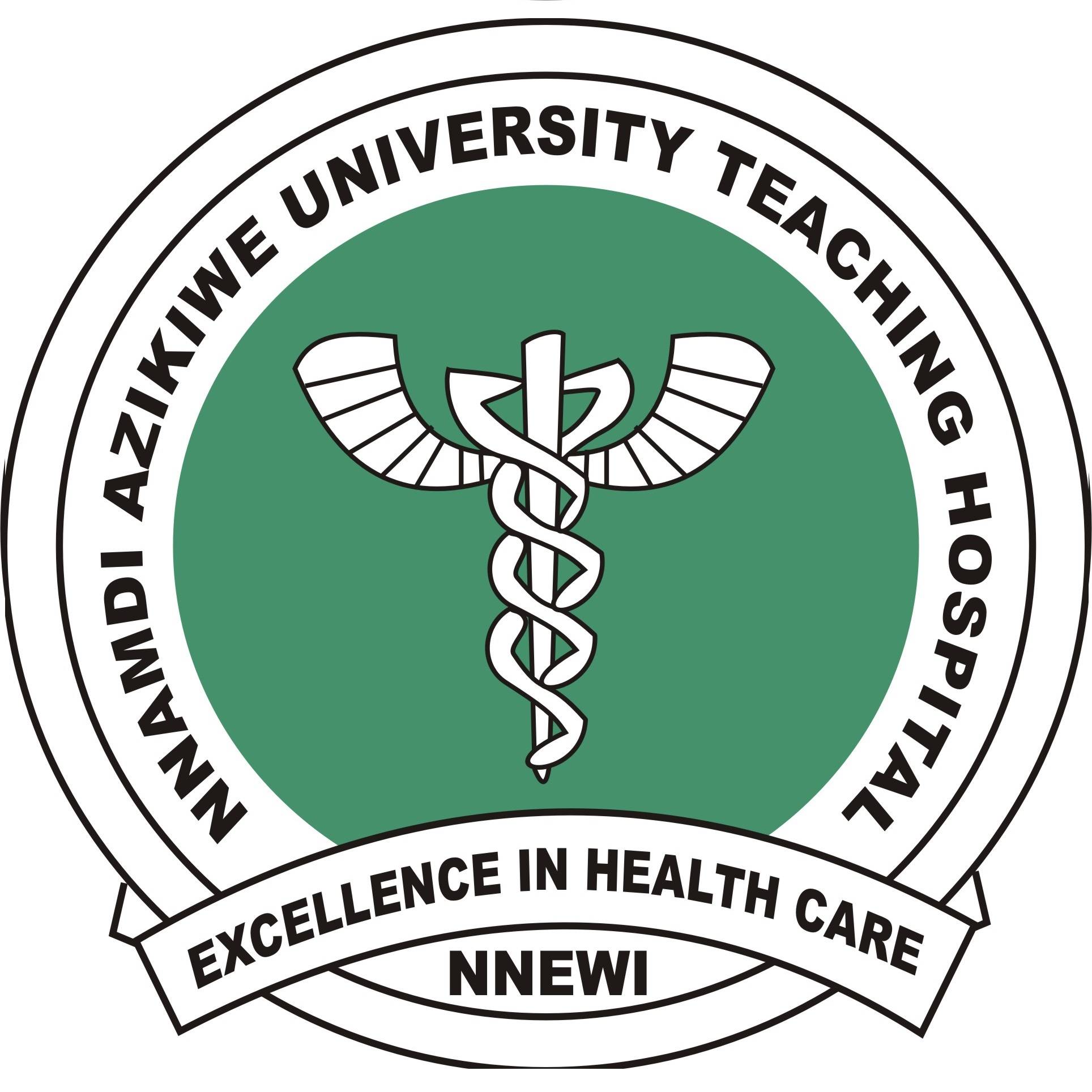Day 1 :
Keynote Forum
Santiago Herrero
The Jilin Heart Hospital, China
Keynote: Management of the infective endocarditis in the cardiac ICU

Biography:
Santiago Herrero is Clinical Director of Adult and Pediatric Postoperative Cardiac Surgical ICU at The Jilin Heart Hospital, Changchun, Jilin Province, China, with 30 years of experience working in Intensive and Critical Care Medicine. Dr Santiago Herrero is board certified critical care physician of the Spanish Society of Critical Care Medicine since 1989. Dr Santiago Herrero received your Research Proficiency in 2008 from the University of Oviedo (2008). He is a Fellow of the American College of Chest Physicians since 2004 and former member of Board of Directors of the Spanish Society of Intensive and Critical Care Medicine (2000-2004). Also, he is the former President of Asturian Society of Intensive Care Medicine (1998-2006). Currently President of EXPAUCI (former patients of the Intensive care units) in Asturias (Spain) since 2012. He was Professor in the Postgraduate Course “The internet and the Health Sciences” by the University of Burgos (Spain) in 1998 and has received several awards based on these communication skills. Recently he was awarded The Mountain Changbai Friendship Award in September 2017 by the Changchun and Jilin Government, China for your notable and enthusiastic support for the construction of Jilin Province and your friendly cooperation.
Abstract:
Infective endocarditis (IE) is an infectious microbial disease of cardiac valvular endothelium. The characteristic lesion consists of the presence of vegetations that can settle in the valvular veils, tendon cords or mural endocardium. Hospital mortality in patients with severe sepsis or septic shock has been between 20 and 50%, a fact probably underestimated and overshadowed by a late referral to the intensive care unit, although clear criteria of admission to the unit for patients have been established with this disorder. The objective of this presentation was to analyze the differential characteristics of patients with IE who required admission to intensive care, as well as the evolution and prognosis of patients admitted according to objective criteria and severity scores, identifying the variables that were associated with the admission into the unit and the death of the patients. A high proportion of patients with endocarditis require admission to the Intensive Care Unit, presenting a more unfavorable prognosis. Infection with bacteria or fungi, heart failure, and stroke are predictors of in-hospital mortality. The knowledge of epidemiology, diagnosis, and microbiology, as well as microbial diagnosis, is fundamental for an adequate treatment in its different stages of the disease. The union of different disciplines, such as intensive medicine, microbiology or cardiology, can be fundamental for early diagnosis and treatment. The use of timelines during the hospital stay of patients in the ICU can help manage this infectious disease and avoid typing errors.
Keynote Forum
Natalia Freund
Tel Aviv University, Israel
Keynote: Revealing the role of antibodies during chronic HIV-1 and Mycobacterium tuberculosis infections in humans

Biography:
Natalia Freund is specializing in antibody response towards infectious diseases. Until recently she has been investigating the antibody response in HIV-1 infected patients at The Rockefeller University in New York. During her work, she isolated several anti-HIV-1 neutralizing antibodies that were found efficacious in pre-clinical studies. Recently, she moved to Tel Aviv University where she is continuing to carry out cutting-edge research on the antibody response during both Tuberculosis and HIV-1 infection.
Abstract:
One of the major re-emerging public health threats is Mycobacterium tuberculosis (MTb). According to the WHO, one of every three individuals in the world was infected with MTb. This number is expected to increase due to an increasing population of patients with HIV-1, and the increasing incidence of drug-resistant MTb strains. The existing BCG vaccine shows a very low efficacy in preventing new infections. Thus, MTb will pose an even higher threat in the future, requiring the development of new strategies to diagnose, treat and prevent MTb. Previous studies of the natural immune response to MTb have focused mainly on the role of T-cells. Recently, several reports suggested that anti-MTb antibodies could contribute to protection. While advancements were made, several major questions remain unanswered, including which B-cell clones are elicited during infection, how different antibodies correlate with the different disease stages and what is the mechanism of anti-MTb antibody neutralization. Our goal is to reveal the role of B-cell immunity to MTb and based on this, develop antibody-based diagnostics, therapeutics, and immunogens against MTb. To achieve this goal we combine single-cell methods, human immunology, and protein engineering. We cloned and express five MTb proteins, which are potential targets for antibodies. These antigens were used to screen sera from MTb-infected individuals by ELISA and identify “Elite Responders”, patients who exhibit high antibody responses against MTb. We then apply singe B cell sorting to identify and sort MTb-specific memory B cells and sequence the antibodies they express.
Keynote Forum
Delfina C DomÃnguez
The University of Texas, USA
Keynote: Rapid and accurate diagnosis of Pertussis using a microfluidic point of care biochip

Biography:
Delfina C Domínguez completed her PhD in Molecular Biology from New Mexico State University and postdoctoral studies from the University of Virginia, Medical School Division of Infectious Diseases, Charlottesville, VA. She is a Professor at The University of Texas at El Paso. Her research interests include Molecular diagnostics, antimicrobial resistance and calcium signaling in Bacteria.
Abstract:
Pertussis is the only vaccine-preventable infection that is still endemic in the US and worldwide. Despite high vaccination coverage in many countries, Bordetella pertussis continues to circulate. The purpose of this research is to develop and validate a low-cost, instrument-free, paper-based microfluidic point of care device (POCD) for rapid, diagnosis of pertussis. Our hypothesis is that the integration of paper-based microfluidic technology with DNA testing can provide a fast and accurate diagnosis that can be used in various venues such as medical offices, schools, and in the field. Our instrument-free detection method comprises a polydimethylsiloxane (PDMS)/paper hybrid microfluidic system integrated with DNA amplification. The system has been created consisting of 3 layers. The top PDMS layer is for reagent delivery, and the middle PDMS layer contains multiple wells for DNA amplification. A piece of paper is inserted in each well to pre-store DNA primers. Our instrument-free system is able to detect specifically B. pertussis successfully, from both isolated organisms and clinical samples. The detection is by fluorescence using a portable UV light pen. The degree of fluorescence can be easily differentiated between the positive and negative controls. We have tested 100 clinical samples and our results are 100% sensitive and 96% specific with an overall agreement of 98% compared to real-time PCR test results. The impact of this research is broad. The POCD has great potential for the quick diagnosis of a broad range of infectious diseases and other applications such as food and environmental analyses.
- Epidemiology of Infectious Diseases and Public Health Concerns | Chronic Obstructive Pulmonary Disease (COPD) | Microbial Genomics & Genome Sequencing | Infectious Diseases | Skin infection | Role of Healthcare in Diagnostic Microbiology
Session Introduction
Pierre Burguière,
AMA Research Solutions,FRANCE
Title: Flow Cytometry-Ââ€based Strategies for Pathogens & Contaminants Analysis

Biography:
Dr. Pierre Burguière is a microbiologist with 15+ years of experience. He’s the founder and CEO of AMA Research Solutions, a biotech company servicing in microbial R&D and quality. Prior to that he worked in the field of beneficial microbes where he held different positions such as Global Quality Director, Preclinical Research Director and Research Scientist. Dr Burguière earned a PhD in microbiology from University Paris Diderot, during which he researched on Bacillus Subtilis sulfur metabolism and its regulation at the Institute Pasteur. He co--â€authored 10+ Scientific research articles, and presented 30+ Lectures & Posters at international conferences.
Abstract:
Flow cytometry is being used since several decades in eukaryotic biology; however its application for microbiological diagnostic is much more recent. Technological advances of research have led to the development of next-â€generation flow cytometry protocols allowing the emergence of avant-â€garde approaches in the field of microbial analytics.
An overview of these global approaches will be presented to illustrate flow cytometry-†based strategies for microbiological analysis, amongst which: i) detection, quantification, and identification of pathogens and contaminants in different matrices (e.g. food products, beneficial microbes products such as probiotics, drinking water and wastewater); ii) determination of microorganisms susceptibility to antimicrobial compounds, iii) assessing beneficial microbes ability to impede adhesion of pathogens onto intestinal epithelial cells.
Technically, these approaches rely on flow cytometry viability assays that can be combined with antibodies (immunofluorescence) or nucleic acid probes (fluorescence in situ hybridization) in order to allow the analyses to be microbe-â€specific. In certain cases, coupling to microbial enrichment (microbiological growth and/or non-â€culture based procedures) is also required.
Efficiency of these approaches has been demonstrated for the analysis of beneficial microbes (e.g. lactic acid bacteria) with higher performances than those of classical approaches (shorter result-â€delivery time, less labor-â€intensive, potential for automation, more precise results). Thus validating the potency of flow cytometry in providinginnovative solutions for R&D and quality microbial analysis.
Hesham H. Ali
University of Nebraska at Omaha,USA
Title: Big Data Analytics in Bioinformatics and Infectious Diseases
Biography:
Hesham H. Ali is a Professor of Computer Science and Lee and Wilma Seemann Distinguished Dean of the College of Information Science and Technology at the University of Nebraska at Omaha (UNO). He also serves as the director of the UNO Bioinformatics Core Facility that supports a large number of biomedical research projects in Nebraska and the surrounding region. He has published numerous articles in various IT areas including scheduling, distributed systems, data analytics, wireless networks, and Bioinformatics. He has also published two books in scheduling and graph algorithms, and several book chapters in Bioinformatics. He has been serving as the PI or Co-PI of several projects funded by NSF, NIH and Nebraska Research Initiative in the areas of data analytics, wireless networks and Bioinformatics. He has also been leading a Research Group that focuses on developing innovative computational approaches to classify biological organisms and analyze big bioinformatics data. The research group is currently developing several next generation big data analytics tools for mining various types of large-scale biological and medical data. This includes the development of new graph theoretic models for assembling short reads obtained from high throughput instruments, as well as employing a novel correlation networks approach for analyzing large heterogeneous biological and health data associated with various biomedical research areas, particularly projects associated with aging and infectious diseases. He has also been leading two funded projects for developing secure and energy-aware wireless infrastructure to address tracking and monitoring problems in medical environments, particularly to study mobility profiling for healthcare research.
Abstract:
With the increasing number and sophistication of biomedical instruments and data generation devices, there is even more increasing pressure on researchers to develop advanced data analytics tools to extract useful knowledge out of the massive collected data. This includes advanced sequencing technologies responsible for the generation of huge amounts of bioinformatics data as well as wearable devices and Internet of Things systems responsible for collecting different types of health and mobility related data. The currently available data is not only massive in size but it also exhibits all the features of big data systems with a high degree of variability, veracity and velocity. How to leverage this raw data to advance biomedical research, particularly in dealing with outbreaks and infectious diseases, and improve health care, through personalized and targeted medicine, can be considered the most exciting scientific challenge of our generation. Developing innovative data integration and mining techniques along with clever efficient computational methods to implement them will be critical in efficiently meeting those challenges and take advantage of the potential opportunities. In this talk, we propose new big data analytics tools using graph modeling and network analysis along with how to effectively utilize High Performance Computing and private/public clouds in implementing such tools. Case studies illustrating how proposed tools were used to analyze data associated with infectious diseases that led to new biological discoveries will also be presented.
Natalia Freund
Tel Aviv University, Israel
Title: Revealing the role of anti-Mycobacterium tuberculosis (MTb) antibodies during natural infection in humans

Biography:
Dr. Natalia Freund is specializing in antibody response towards infectious diseases. Until recently she has been investigating the antibody response in HIV-1 infected patients at The Rockefeller University in New York. During her work, she isolated several anti-HIV-1 neutralizing antibodies that were found efficacious in pre-clinical studies. Recently, she moved to Tel Aviv University where she is continuing to carry out cutting-edge research on the antibody response during both Tuberculosis and HIV-1 infection
Abstract:
One of the major re-emerging public health threats is Mycobacterium tuberculosis (MTb). According to the WHO, one of every three individuals in the world was infected with MTb (1). This number is expected to increase due to an increasing population of patients with HIV-1, and the increasing incidence of drug-resistant MTb strains. The existing BCG vaccine, shows a very low efficacy in preventing new infections (1). Thus, MTb will pose an even higher threat in the future, requiring the development of new strategies to diagnose, treat and prevent MTb.
Previous studies of the natural immune response to MTb have focused mainly on the role of T cells. Recently, several reports suggested that anti-MTb antibodies could contribute to protection (2). While advancements were made, several major questions remain unanswered, including which B cell clones are elicited during infection, how different antibodies correlate with the different disease stages and what is the mechanism of anti-MTb antibody neutralization. Our goal is to reveal the role of B cell immunity to MTb and based on this, develop antibody-based diagnostics, therapeutics and immunogens against MTb. To achieve this goal we combine single-cell methods, human immunology and protein engineering. We cloned and express five MTb proteins, which are potential targets for antibodies. These antigens were used to screen sera from MTb-infected individuals by ELISA and identify “Elite Responders”, patients who exhibit high antibody responses against MTb. We then apply singe B cell sorting to identify and sort MTb-specific memory B cells and sequence the antibodies they express .
Diana Chebet
InfectionControl.tips Country Coordinator , Kenya
Title: RECURRENT URINARY TRACT INFECTION DURING PREGNANCY

Biography:
Diana Chebet is an experienced Microbiologist with vast knowledge on Infection Prevention and Control. She currently works as the Director of Health, Programmes& Partnerships at the Youth Senate Kenya and as the Country Coordinator for a Canadian based organization, InfectionControl.tips. She is the notable speaker on Infection Prevention & Control to the Southern African countries Infection Prevention & Control team. She is a team player and a focal person in Infection Prevention Network of Kenya conference planning committee. Diana Chebet is passionate about infection prevention and control. She is the link person between Kenyan ministry of health (infection prevention & control department) and hospitals, both private and public; to facilitate correct information dissemination as far as Infection Prevention & Control subjects are concerned.
Abstract:
Symptomatic bacteriuria in pregnancy is associated with preterm delivery, intrauterine growth retardation, low birth weight, maternal hypertension, pre-eclampsia and anaemia. Acute pyelonephritis can lead to maternal sepsis which can kill or disable a mother.
Methodology & Theoretical Orientation:
Midstream urine samples (after careful washing) were collected at random from pregnant mothers.
Microscopic examination of urine was performed to detect patients with significant bacteriuria
Findings:
The main causative agent involved in recurrent UTI during pregnancy is E.coli. This pathogen accounts for approximately 85% of all cases. Other significant pathogens are Proteus mirabilis, Staphylococcus saprophyticus and Klebsiella pneumonia accounting to approximately 3% of all cases of acute cystitis
Conclusion & Significance:
Women with recurrent urinary tract infection associated with sexual intercourse should be offered post – coital prophylaxis as an alternative to continuous treatment to minimize cost and side effects. All pregnant women should be screened for UTI’s and Escherichia coli in particular, in all the trimesters.
Antibiotics should be administered once a case has been detected and patients advised to be compliant to the medication.
Samir Mashelkar
Consultant and Technical Expert for Pharma and Biotech Companies, India
Title: Alteration in Glucose-6-phosphate dehydrogenase activity in polymorphonuclear neutrophils in pneumonia

Biography:
Dr.Samir Mashelkar has her expertise in evaluation and passion in improving the health and wellbeing. His open and contextual evaluation model based on responsive constructivists creates new pathways for improving healthcare .He has done lot of work on antioxidants in cells and extracellular enzymes in bacteria which will help in improving diagnosis of infectious disease.He has built this model after years of experience in research , evaluation , teaching and administration both in hospital and education institutions. He has completed his Ph.D from T.N Medical College, Mumbai,India. He was Director of VXL Clinical Laboratory and Research Centre. He has published more than 20 papers in reputed journals and has been serving as an Consultant to Pharmaceutical and Biotech companies in Tanzania and Malaysia .
Abstract:
Pneumonia is the leading infectious killer disease worldwide , killing 1 child every 3 minutes in India. There is excessive polymorphonuclear leucocytes recruitment during pneumonia . Polymorphonuclear leucocytes are phagocytes which undergo respiratory burst . Glucose – 6 - phosphate dehydrogenase is a cytoplasmic enzyme which catalysis first reaction of the pentose phosphate pathway providing reducing equivalent for several reactions . It is closely associated with polymorphonuclear leucocytes phagocytic capacity and is essential for the cell capacity to withstand oxidative stress . Therefore we have undertaken this study to assess the role of glucose – 6 - phosphate dehydrogenase from polymorphonuclear leucocytes in pneumonia . Blood was collected from freshly diagnosed cases of pneumonia (n = 50) along with age matched controls ( n= 50 ) . Polymorphonuclear leucocytes were separated and lysed . Glucose - 6 - phosphate dehydrogenase from polymorphonuclear leucocytes lysate was measured spectrophotometrically . Glucose – 6 - phosphate dehydrogenase activity was found to be decreased in polymorphonuclear neutrophils in peumonia with p < 0.001 . We conclude that this result will provide us a clue which will aid in proper diagnosis of the patients with pneumonia.
Sumera Aziz Ali
Aga Khan University, Pakistan
Title: Role of Cultural and Social Barriers in Increased Burden of Hepatitis B in Pakistan: Literature Review
Biography:
Dr. Sumera Aziz Ali (MBBS, MSc, FCPS)
Senior Instructor
Department of Community Health Sciences
The Aga Khan University, Stadium Road
Abstract:
Hepatitis B is a deadly infectious disease, which is increasing now days in Pakistan. This disease is mainly rooted in the poverty and illiteracy. There are huge discrepancies in health conditions between rural and urban areas and among different socio-economic strata, which have also played role in increasing the burden of this deadly disease. Furthermore, multiple social and cultural barriers are prevailing in the country which might play an important role in increasing the burden of this disease in the society. Thus, the objective of this review was to synthesize the findings regarding the burden of Hepatitis B in Pakistan and to review the social and cultural barriers, which have resulted increased burden of the Hepatitis B in Pakistan. Multiple social and cultural barriers including poverty, ignorance, cultural and traditional activities, practice of shaving at barbers, lack of sterilization facilities and infection control policies, cultural norms and myths about vaccines, lack of policy implementation, increased number of quacks and injection drug usage have resulted in increased burden of this disease in our society. Public awareness needs to be created in the general population along with law enforcement by the Government to regularize the non- formal and private health sector. Moreover, vaccination programs are required to improve the overall vaccination coverage. Government needs to make innovative strategies according to the social and cultural context of country.
Ugoh Sylvanus Chukwudi
University of Abuja, Nigeria
Title: Antibacterial and Antioxidant Activities of Piper guineense (Uziza) on some Human Pathogens

Biography:
Dr Ugoh Sylvanus Chukwudi has his expertise in Medical Microbiology with passion in medicinal plants bioprospecting. He is a Senior Lecturer in the Department of Microbiology, University of Abuja, Nigeria.
Abstract:
Statement of the problem: Most of the known antibiotics used in the treatment of commonly known bacterial diseases are fast being ineffective because of the resistance of these bacteria to the drugs and where available can be very costly especially in the developing countries. Hence there is neethat d to look for drugs from plant sources and are cost effective. This study therefore focuses on the evaluation of the phytochemical constituents, antioxidant activity and antibacterial effect of Piper guineense seed.
Methodology & Theoritical Orientation: The seeds of Piper guineense were extracted using methanol, hexane and sterile distilled water as solvents. The test organisms were Escherichia coli, Staphylococcus aureus, Salmonella typhi, and Klebsiella pneumoniae The phytochemical analysis of the extracts revealed the presence of alkaloids, glycosides, steroids and terpenoids, tannins, saponins, flavonoids and phenols. The different extracts of Piper guineense seeds exhibited different levels of antioxidant activities. The highest percentage inhibition at 1 mg/ml for the methanol, hexane and aqueous extracts were 83.18%, 76.49% and 46.53% respectively. The methanol extract showed highest antioxidant activity. The zone of inhibition of the methanol extract against E. coli ranged from 6 mm to 13 mm, and 8 mm to 14 mm against S. aureus. However, the methanol and aqueous extract had no effect against K. pneumoniae. The zone of inhibition of the hexane extract against E. coli, S. aureus, S. typhi and K.pneumoniae ranged from 8mm to 19mm, 13mm to 19mm, 9mm to 20mm, and 13mm to19mm respectively. The minimum inhibitory concentration (MIC) of the methanol extract against E. coli, S. aureus, were at 125 mg/ml and 250 mg/ml against Salmonella typhi. The MIC of the hexane extract against E. coli and S. typhi were at 250 mg/ml and 125 mg/ml against S. aureus. The MIC of the aqueous extract against E. coli, and S. typhi were at 250 mg/ml and 500 mg/ml against S. aureus. The minimum bactericidal concentration (MBC) of the methanol extract against S. aureus and S. typhi was at 250 mg/ml. The MBC of the aqueous extract against E. coli was at 250 mg/ml. the MBC of the hexane extract against E. coli and K. pneumonia was at 250 mg/ml and at 500 mg/ml against S. typhi.
Conclusion & Significance: The potentials exhibited by Piper guineense can be harnessed for the production of antibiotics or to enhance the efficacy of existing ones.
Richard Ekong
AIDS Support Organisation(TASO), Uganda
Title: PREVALENCE OF MALARIA IN HIV SERO POSITIVE PATIENTS UNDER ANTIRETROVIRAL THERAPY ATTENDING THE INFECTIOUS DISEASE INSTITUTE

Biography:
Richard Ekong is a Ugandan generalist medical laboratory technologist with vast experience in providing information for patient diagnosis and treatment by performing laboratory tests in toxicology, chemistry, hematology, molecular biology, microbiology etc.I have worked with the infectious disease institute Uganda, Lancet Laboratories Uganda, The Aids Support Organization (TASO) Uganda and Currently working as a laboratory Technologist under Intrahealth at Moroto Referral Hospital.
Abstract:
Statement of the problem; Malaria is the world’s most wide spread infection and according to the malaria report 2011, malaria was prevalent in 106 countries of the tropical and semitropical world with 35 countries in central Africa bearing the highest burden of cases and deaths worldwide.
HIV/AIDS, infection has been associated with increased incidence of malaria and more severe disease and hence there is need to evaluate the use of microscopic quantification of malaria parastamia among HIV patients under antiretroviral therapy.
The study was aimed at determining the prevalence of malaria in HIV positive patients, determining the sex frequency and age distribution of malaria using microscopy which is the gold standard for malaria diagnosis. The findings of the study were meant to emphasize to the HIV/AIDS clinicians the utility of parasitological based diagnosis versus presumptive treatment of malaria within HIV treatment programs within the infectious disease institute and the entire public as a whole. This study was also done so as to provide baseline data at the infectious disease institute and the health service commission as a way of alerting the malaria control programs of the potential of malaria-HIV added influence with the view for development of joint strategies.
Methodology and theoretical orientation; a total of 384 adults attending the infectious disease clinic were enrolled in this study between the months of January and march .Blood specimens were collected from HIV positive patients under antiretroviral therapy that consented to the study into purple top EDTA vacutainers and processed accordingly for falciparum detection using microscopy by making thick smears which were then later stained with leishman stain for 10 minutes then air dried.
A total of 110(28.7%) out of the 384 HIV/AIDS infected patients on antiretroviral therapy had malaria.
Conclusion and significance: The study revealed a low prevalence of asymptomatic malaria among HIV infected patients on antiretroviral therapy. Measures to reduce malaria infection among HIV patients are advocated.
Mohamed Fathey Abd El –Reheem
Climax Healthcare Services Company(LLC), Cairo, Egypt
Title: Infection Control Knowledge, Attitudes, And Practices Among Healthcare Workers

Biography:
DR. Mohamed Fathy – PhD, MBA, FAIHQ, (CPHRM), MBBCH, Quality Management Director – Private Hospital – Royal Commission in Yanbu, Climax Healthcare Services Company Partner and General Manger. PhD in Hospital Mangement,Ashley University, USA, MBA , Brooklyn Park University NY,USA, 2013 , Diploma of Hospital Management, 2007 (Ain Shams University), Diploma in Total Quality Management in Healthcare, 2005 (AUC). He is a member of Fellow in American Institute of Health Care Quality (AHCQ) 2007. Participated in Various National and International conferences,
Dr. Mohamed Fathy Graduated from School of Medicine MBBCh, 1997, and Certified Professional in Healthcare Risk Management (CPHRM) 2003,Risk Management Foundation of the Harvard Medical Institutions, he has Over 12 years as a health care executive ,Expertise in Patient safety, quality measurement and management, ,He work as Healthcare Organization Consultant 2010, he has involved in many national and international projects on CQI in hospitals, Besides lecturing on continuous quality improvement principles, models and techniques, Accreditation in health care either JCI/CBAHI Accreditation , Certified as health organization surveyor, Trainer on different topics of total quality management issues such as implementation of CQI models in health care facilities like ISO 9001; 2000 version, JCI accreditation standards, Expert; ISO 14001 Environmental Management System, HACCP, ISO 22000 Food safety management systems, OHSAS 18001 Occupational Health and Safety, Have a Good experience in accreditation standards, and Methodology of patient and employee satisfaction, quality of care and for health personnel and utilization surveys, process and outcome management surveys, problem solving techniques etc.
Abstract:
Neonatal infection is a primary cause of morbidity and mortality worldwide. Objective to facilitate performance improvement by reduction of hospital-acquired infection (HAI) in hospitalized neonates.
Current infection control practices were surveyed and two main areas were identified for quality improvement: hand hygiene, compliance with infection control .Over 6 months, several initiatives were implemented to reduce risk of HAI. 1. Hand Hygiene: The unit manager established a hand soap and hand sanitizer. 2. Compliance with Infection Control Guidelines, Weekly basis health educational a session for neonatology unit was implemented. Infection control measures discussed included the use of gowns, hand washing and proper cleaning. This teaching role rotated between staff over the course of the month. 3. Reduction of non-clinical visitors: Non-clinical staff visited for social reasons frequently. Lessons Learned the unit initially struggled to find the resources needed. In working with the hospital-wide infection control initiative, neonatal staff, and visitors, the resources were available for a sustainable improvement project. The unit manager sought consensus that these interventions were possible and important as well as soliciting staff ideas. Soap and hand sanitizer were consistently available, parents reminded each other of infection control measures, and non-clinical staff in the unit has decreased significantly. In resource-poor settings, assuring sustainability is critical as waste and infection risk have a larger impact than in resource-rich settings. The development and implementation of infection control measures and evidence based interventions included gathering administrative support for reduction of waste and infection risk staff and visitors who supported infection control measures within the Neonatal Intensive Care Unit.
Tayo Alex Adekiya
University of Zululand, South Africa
Title: Modelling the influence of climate change on schistosomiasis transmission dynamics

Biography:
Tayo Alex Adekiya is currently pursuing his postgraduate studies in the department of Biochemistry at the university of Zululand. Presently, he is the secretary general of postgraduate student’s association at the university. He has recently published three papers in reputed journal.
Abstract:
Climate change has been suggested to elicit significant impact on the interactions between pathogens and their hosts. Vector-borne diseases are predominantly sensitive to climatic factors because temperature variability can alter vector development rates, transmission dynamics, as well as cause alteration in their geographical distribution. Schistosomiasis, ranked the second most widespread among neglected tropical diseases is caused by flatworms belonging to the genus schistosoma. Symptoms of the parasitic infections include acute and chronic diseases, predisposition to cancer of the bladder, as well as pulmonary and portal hypertension and in extreme cases, death. This study employs a deterministic climate-based model using differential equations to investigate the impact of rainfall and temperature on the population dynamics of schistosomes over South Africa. Numerical simulations of the system were done using mathematical models to examine the effect of climate variability on the transmission dynamics of schistosomiasis. Results showed climate variability increases reproduction number of schistosomes and snails hence, schistosomiasis transmission was suggested to be seasonal. Snails’ reproduction was found to peak during summer and at the minimum during spring and autumn. More so, sensitivity analysis showed reproductive number of schistosomes is more sensitive to the reproduction rate of snails and the probability of infections. Finally, the model used suggested future opportunity for modification and refinement for effective prediction of climate variability on the transmission dynamics of schistosomiasis.
Grace Pennap
Nasarawa State University, Nigeria
Title: Hepatitis B virus epidemiology, molecular characterization and novel appearance of genotypes B and mixed infection with B and E genotypes in Nigeria

Biography:
Grace Pennap is a Microbiology Lecturer with Nasarawa State University, Keffi, Nigeria. She holds a PhD in Microbiology and has the special interest in Medical Virology. She has published 47 peer-reviewed articles in reputable journals and has attended and presented papers in several Conferences. She is a member of Nigerian Society for Microbiology and American Society for Microbiology.
Abstract:
The progression of hepatitis B virus (HBV) infection to cirrhosis and liver cancer and response to treatment are associated with the infection status of the host and infecting viral genotype. With the dearth of such information in Nigeria for a successful halt to progression and treatment, this study was carried out to determine the epidemiology, infection status and viral genotypes circulating in Nigeria. Blood samples from 350 consenting apparently healthy youths were screened for HBV infection serological markers (HBsAg, anti-HBs, HBeAg, anti-HBe, and anti-HBc) using the 5-panel HBV profiling diagnostic kit (Qingdao High Top Biotech Co. Ltd Hangzhou, China). Based on the absence or presence of the respective seromarkers, 1.1% of the participants were found to have chronic infection with high viral replication, 2.6% with acute infection and high viral replication, 4.6% were carriers with low viral replication, 38.3% were immune, 52.0% were susceptible and 1.4% had recently been vaccinated. Twenty-nine samples that were positive for both HBsAg and HBeAg were selected for genotyping by Polymerase Chain Reaction using type-specific primers. The prevalence of infection based on the presence of HBsAg was 9.7%. This study also reported the circulation of genotype A(13.8%), B(13.5%), E(44.8%) and mixed infection with B and E(6.9%) in this group. The predominance of genotype E was confirmed and to the best of our knowledge, this is the first public report of genotypes B and mixed infection with genotypes B and E in Nigeria. This may improve the current knowledge of epidemiological, clinical and virologic patterns of HBV in Nigeria. However, the implication of the mixed infection is the resultant emergence of a hybrid strain.
Santiago Herrero
The Jilin Heart Hospital, China
Title: Infectious diseases related to patients with COPD in critical care

Biography:
Santiago Herrero is Clinical Director of Adult and Pediatric Postoperative Cardiac Surgical ICU at The Jilin Heart Hospital, Changchun, Jilin Province, China, with 30 years of experience working in Intensive and Critical Care Medicine. Dr. Santiago Herrero is board certified critical care physician of the Spanish Society of Critical Care Medicine since 1989. Dr. Santiago Herrero received your Research Proficiency in 2008 from the University of Oviedo (2008). He is a Fellow of the American College of Chest Physicians since 2004 and former member of Board of Directors of the Spanish Society of Intensive and Critical Care Medicine (2000-2004). Also, he is the former President of Asturian Society of Intensive Care Medicine (1998-2006). Currently President of EXPAUCI (former patients of the Intensive care units) in Asturias (Spain) since 2012. He was Professor in the Postgraduate Course “The internet and the Health Sciences” by the University of Burgos (Spain) in 1998 and has received several awards based on these communication skills. Recently he was awarded The Mountain Changbai Friendship Award in September 2017 by the Changchun and Jilin Government, China for your notable and enthusiastic support for the construction of Jilin Province and your friendly cooperation.
Abstract:
COPD is a general term used to cover a variety of abnormalities that often coexist: chronic bronchitis, emphysema, and peripheral airway disease. Acute exacerbations of COPD (AECOPD) are common, particularly during the winter months, increasing the admissions in Hospitals. When patients worsening the lung function on a dramatic respiratory failure they are admitted in the Intensive Care Unit (ICU) for ventilatory support. It is important to know every acute exacerbation it leads to an increasing deterioration of the respiratory function. In the ICU the patients they are admitted requiring invasive and non-invasive ventilatory support. The role of respiratory infections associated with AECOPD is very heterogeneous involving not only those infections that patients present in the exacerbations but also those infections that are acquired in the ICU as community-acquired pneumonia (CAP) or ventilator associate-pneumonia (VAP) in those patients who are ventilated invasively for more than 5 days. Some tests can from the beginning help us to make a potential differential diagnosis of bacterial and viral infections. The diagnosis and treatment of bacterial pneumonia in patients who are receiving mechanical ventilation remain a difficult challenge. Some biomarkers could be an advance in the diagnosis and monitoring of this type of patients with pneumonia. The presence of soluble sTREM-1 in bronchoalveolar-lavage fluid from patients receiving mechanical ventilation may be an indicator of bacterial or fungal pneumonia. The union of different disciplines, such as intensivist, pneumologist, internist, microbiologist, and bacteriologist can be fundamental forget an early diagnosis and treatment.
Ozor Nnamdi Sergius
Nnamdi Azikiwe University Teaching Hospital, Nigeria
Title: Review of malignant skin tumors in Nnewi, South-East, Nigeria

Biography:
Background: Skin malignancy rank among the most common malignancies involving both sexes. Basal cell carcinoma is reported as the commonest malignancy even though studies have implicated Squamous cell carcinoma as the commonest especially in the tropic regions of the world.
Aims and objectives: This study aims at determining the frequency and patterns of malignant skin tumors in Nnewi, Nigeria.
Methodology: This is a retrospective study from 2008 to 2017 (10 years) of histologic slides and records belonging to patients presenting to this hospital.
Results: A total of 312 skin biopsies were received in the Histopathology department during the study period. Out of these, 77 cases were malignant skin lesions (24.7%). The commonest skin malignancy was Squamous cell carcinoma, accounting for (n=34; 44.2%). Melanoma constituted the second majority of the cases (n=21; 27.3%). This is closely followed by basal cell carcinoma, accounting for (n=20; 26.0%). Other malignant skin tumors seen are: Malignant acrospiroma (n=1; 1.3%) and Cutaneous T-cell lymphoma (n=1; 1.3%).
It was also discovered that 47 (61%) out of 77 malignant cases were males, while 30 (39%) of them were females, therefore the male: female is 2:1.3.The mean age of those with malignant skin tumors is 59.4 years. It was observed that patients of ≥60 years constitute 48.1% while patients <30years of age constitute 5.6% of those with malignant skin tumors.
Conclusion: The frequencies of different morphological pattern are different from those reported in western countries. However, it is similar to a work done in a Midwestern Nigeria tertiary hospital.
Abstract:
Dr Ozor Nnamdi Sergius, was born 39 years ago in Enugu, South-East, Nigeria. He is currently a Specialist Registrar in Histopathology department of Nnamdi Azikiwe University Teaching Hospital, Nnewi, Nigeria. He has Bachelor’s degrees of Medicine and Surgery (MB, BS). He also has Bachelor’s degree of Science (BSc in Applied Microbiology) with a Masters of Science (MSc in view in Medical Microbiology). He was the pioneer Medical Director of Godfrey Okoye University Health Services, Enugu, Nigeria in 2009. He has submitted five papers for publication in notable journals.
AÃda Aidé Luna Pérez
Cinvestav and Hospital Juárez de México, México
Title: Influence of the vaginal microbiota in the expression of IDO enzyme in cervical tissue

Biography:
Aída Aidé Luna Pérez has completed her bachelor´s degree in Experimental Biology in Guanajuato University in the faculty of chemistry. She completed her undergraduate thesis in molecular oncology area at the Instituto Nacional de Medicina Génómica. Later she made a research stay at the Cancer Research Center in Salamanca, Spain. She is currently finishing her master's degree in the Department of Genetics and Molecular Biology at CINVESTAV, México.
Abstract:
Cervical cancer (CC) is a multifactorial disease, in which the principal risk factor is the infection by the Human papillomavirus (HPV). However, some observations suggest HPV is not the only determinant for CC development, and other factors may be involved, such as unbalanced immune system, and cervico-vaginal dysbiosis. For instance, HPV-positive women with different degrees of cervical intraepithelial neoplasia have major bacterial dysbiosis, categorized mostly like bacterial vaginosis. The purpose of this study is to evaluate the influence of the vaginal microbiota on the expression of indolamine 2,3-dioxygenase (IDO) enzyme at an early stage of cervical carcinogenesis in cervical tissue. We used the "K14E7" CC model mice, which consists of hormonal treatment and the HPV E7 oncoprotein expression; CC model mice with low-abundance modified vaginal microbiota due to the use of a Broad-spectrum Antibiotic Cocktail (BAC) treatment during 6 days; and FvB control mice (genetic background of the K14E7 mice without E7 protein expression). We found that vaginal microbiota differs between CC model mice and the FvB mice. The relative abundance of Proteobacteria and Actinobacteria phyla is smaller, while the relative abundance of Firmicutes and Cyanobacteria phyla is larger in CC model mice with respect to FvB mice. We observed the relative microbiota abundance in the CC model mice treated with BAC is similar to the FvB mice. We also determined that CC model mice overexpressed IDO enzyme in cervical tissue compared to the FvB mice. Moreover, our results suggest that higher IDO expression is found in the CC model mice with BAC treatment compared to the CC model mice as well as to FvB mice. Based on our findings, we suggest the vaginal microbiota is different in the FvB mice compared to the CC model mice but is similar to CC model mice with BAC treatment, and also this vaginal microbiota influence IDO expression in cervical tissue. This research was financed by CONACyT-163235 INFR-2011-01, and FONSEC SS/IMSS/ISSSTE-CONACYT-233361 to JGM; by SEP-CONACYT-242506 to ECM, and by SEP-CONACYT-236767 to PGV.
Fadwa AlBawardi
Ministry of National Guard-Health Affairs, Saudi Arabia
Title: Role of business intelligence analytics in healthcare decision-making
Biography:
Fadwa AlBawardi, MS, provides her perspective as an Acting Director, Data and Business Intelligence Management Department, Information Systems and Informatics Division, within Ministry of National Guard, Saudi Arabia. Ms. AlBawardi received her MS in Computer Science at Boston University, and has been working in the data warehousing/business intelligence areas for several years.
Abstract:
Statement of the Problem: The role of Business Intelligence Analytics in Healthcare Decision-Making, is significant. There are several Data Governance aspects that need to exist when a healthcare enterprise seeks reliable data and analytics; for decision-making. Accuracy, Availability, Usability, Integrity, Security, Accessibility as well as Data Privacy and Confidentiality; constitute the pieces of the puzzle; and eventually must connect to achieve the complete resulting picture. The purpose of this study is to describe the experience of successfully going through the journey of implementing several Business Intelligence Analytics; related to areas where research and analysis of outcomes for improvement are needed, such as the study of: “Ambulatory Care Services” No-Show patients; within the organization. It was noticed that the number of No Show patients was relatively high and using analytics which categorizes the patients by Gender, Department, Physician and Age Groups, assessment of the existing problem and its root cause was made.
Methodology: An assessment study was conducted to measure the percentage of performance improvement for hundreds of no-show patients; before and after the Analytics was created and utilized; based on making sure that the above Data Governance aspects are all met.
Findings: Based on the utilization of several Business Intelligence analytical dashboards, over several months, there were several measures and action plans taken by the organization which led to the improvement and decrease in the percentage of the No-Shows, from 63% to 56% in one of the organization’s hospitals, as well as a decrease from 53% to 43% in a second hospital, within the organization.
Conclusion & Significance: No Show patients, were targeted in the research through Business Intelligence Analytics, in order to identify, analyze, assess, and improve the status of these patients. Recommendations were made to ensure that the percentage of Ambulatory Care No Show patients would decrease by end of 2018 to 35%, at least. The impact of the utilization of Analytics is high with such findings.






